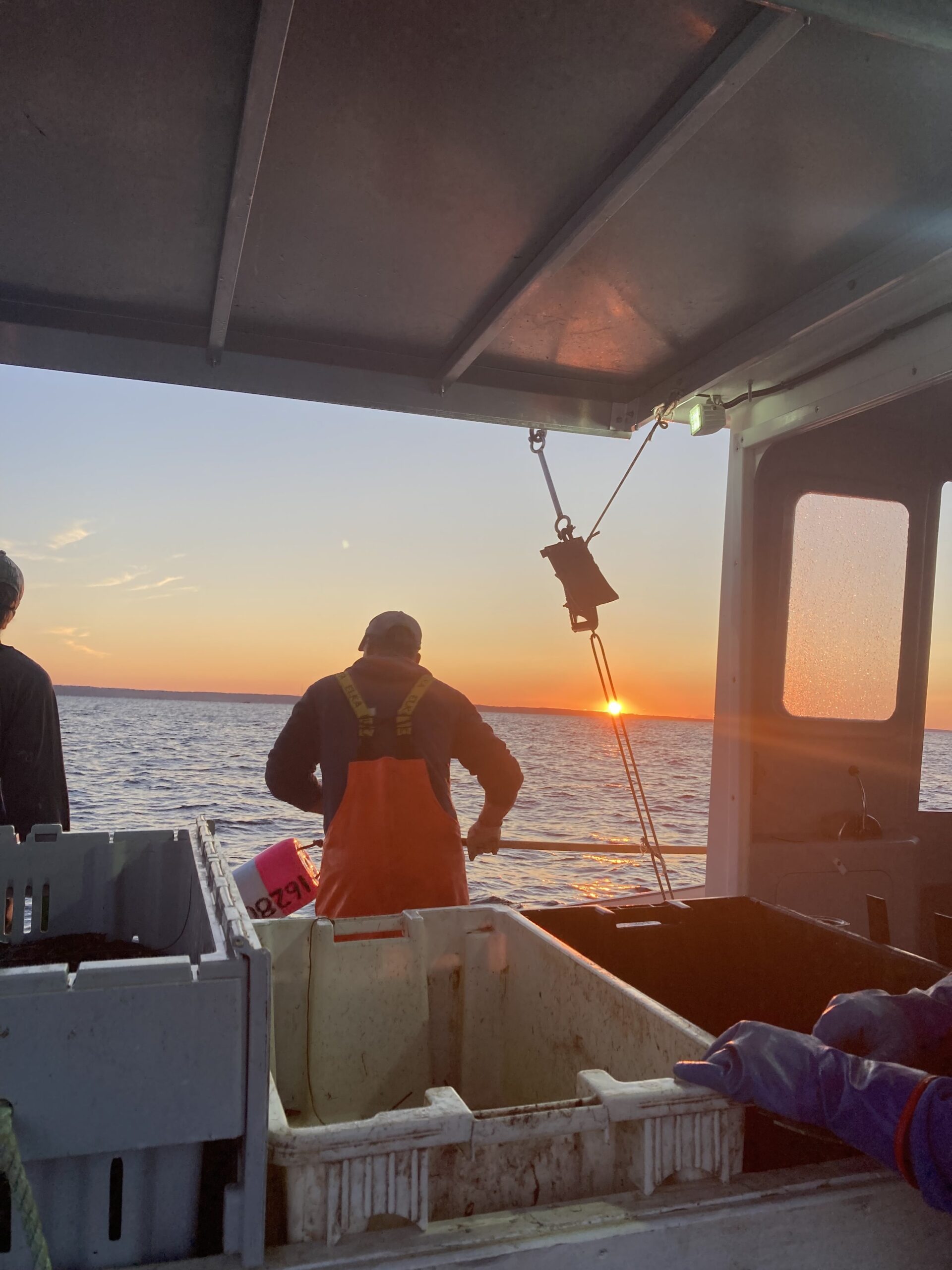
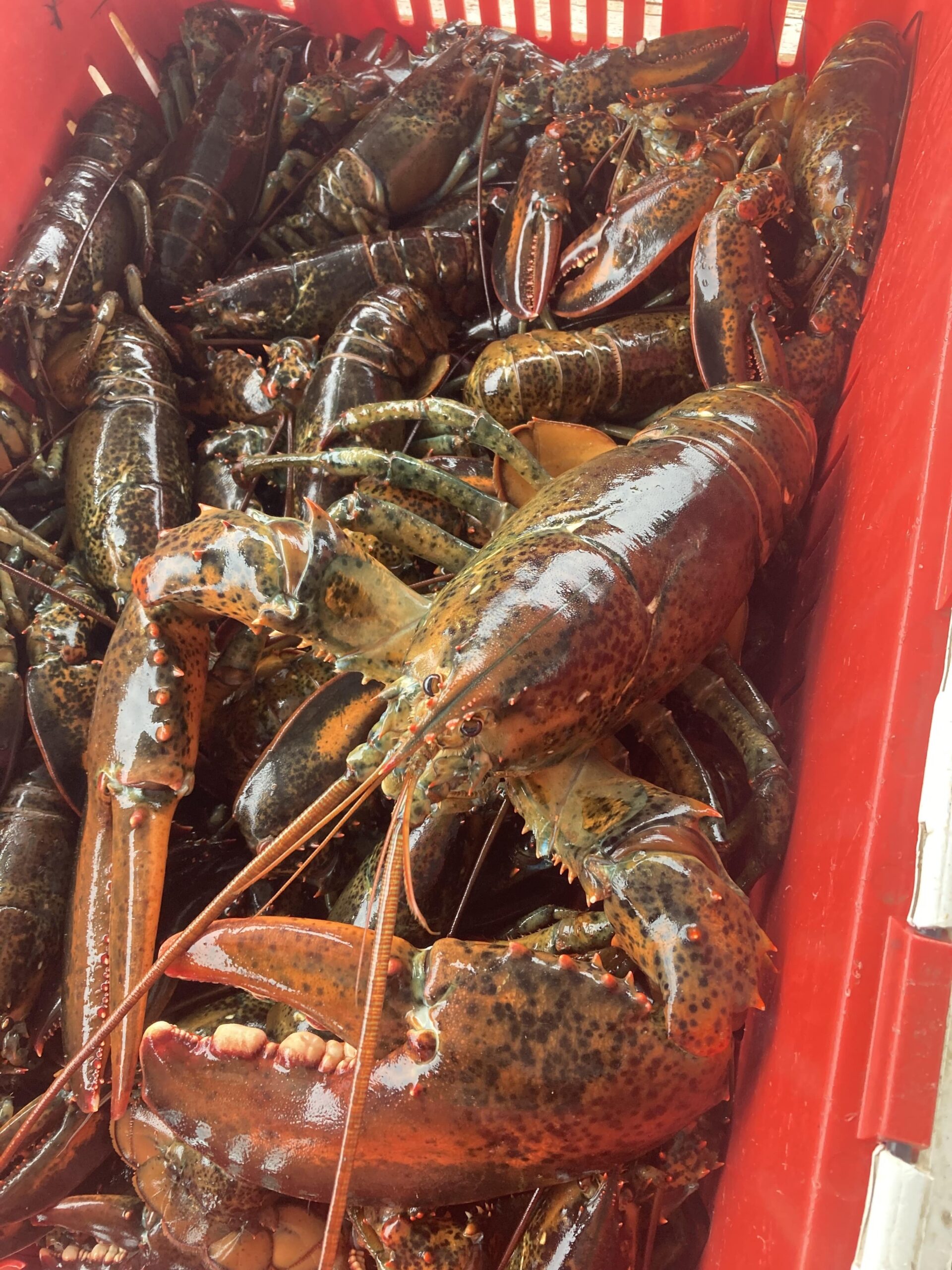
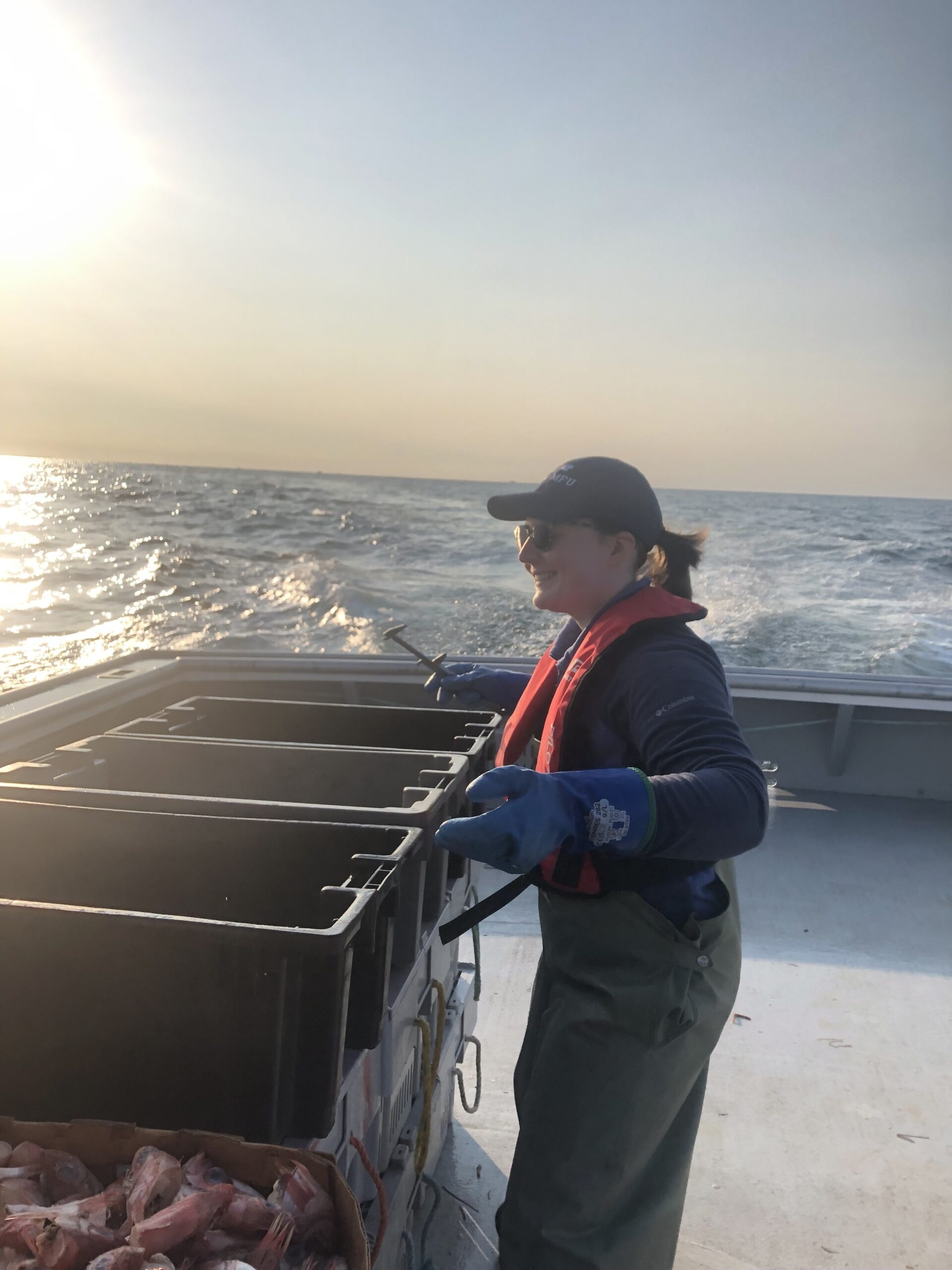
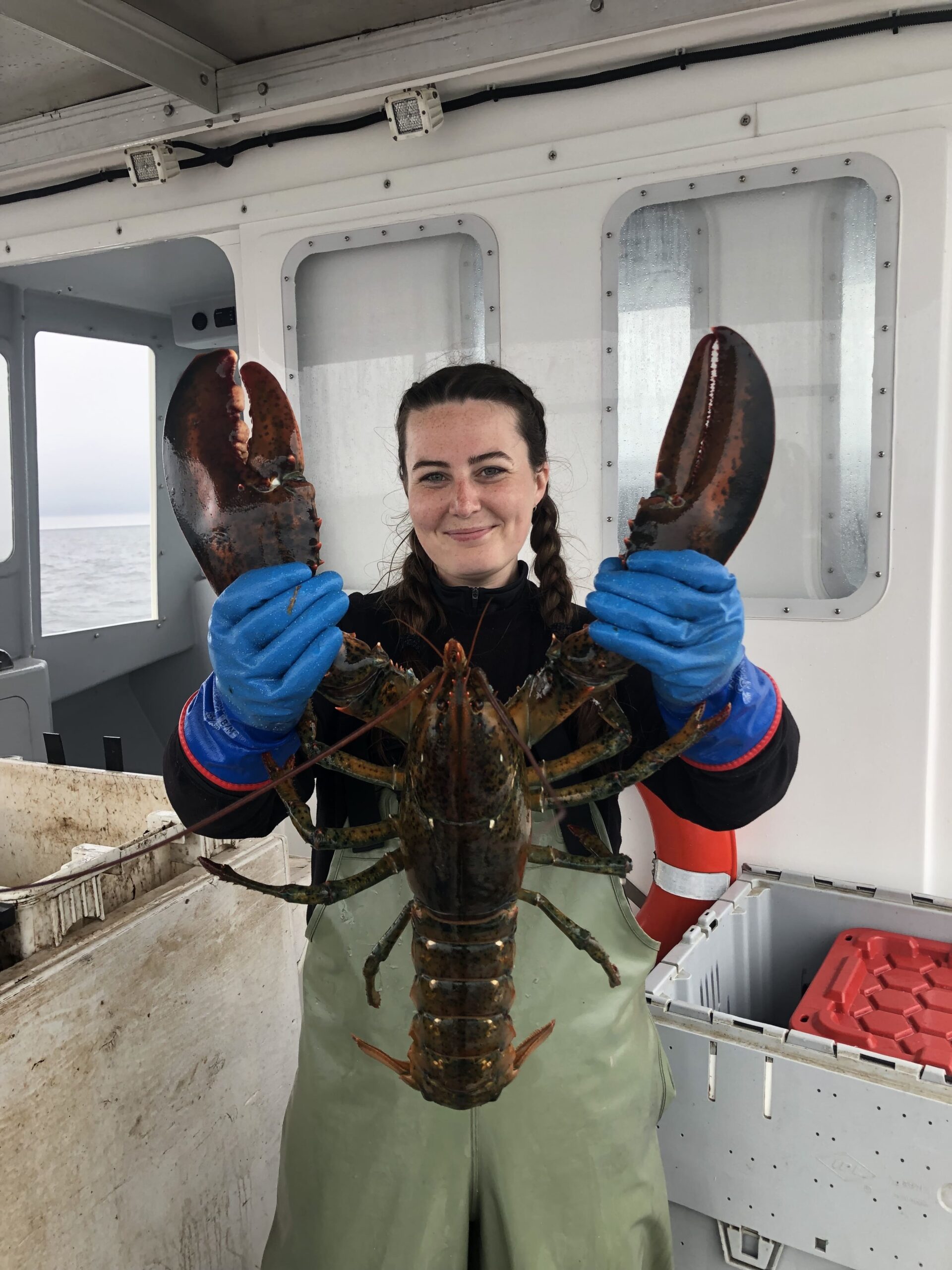
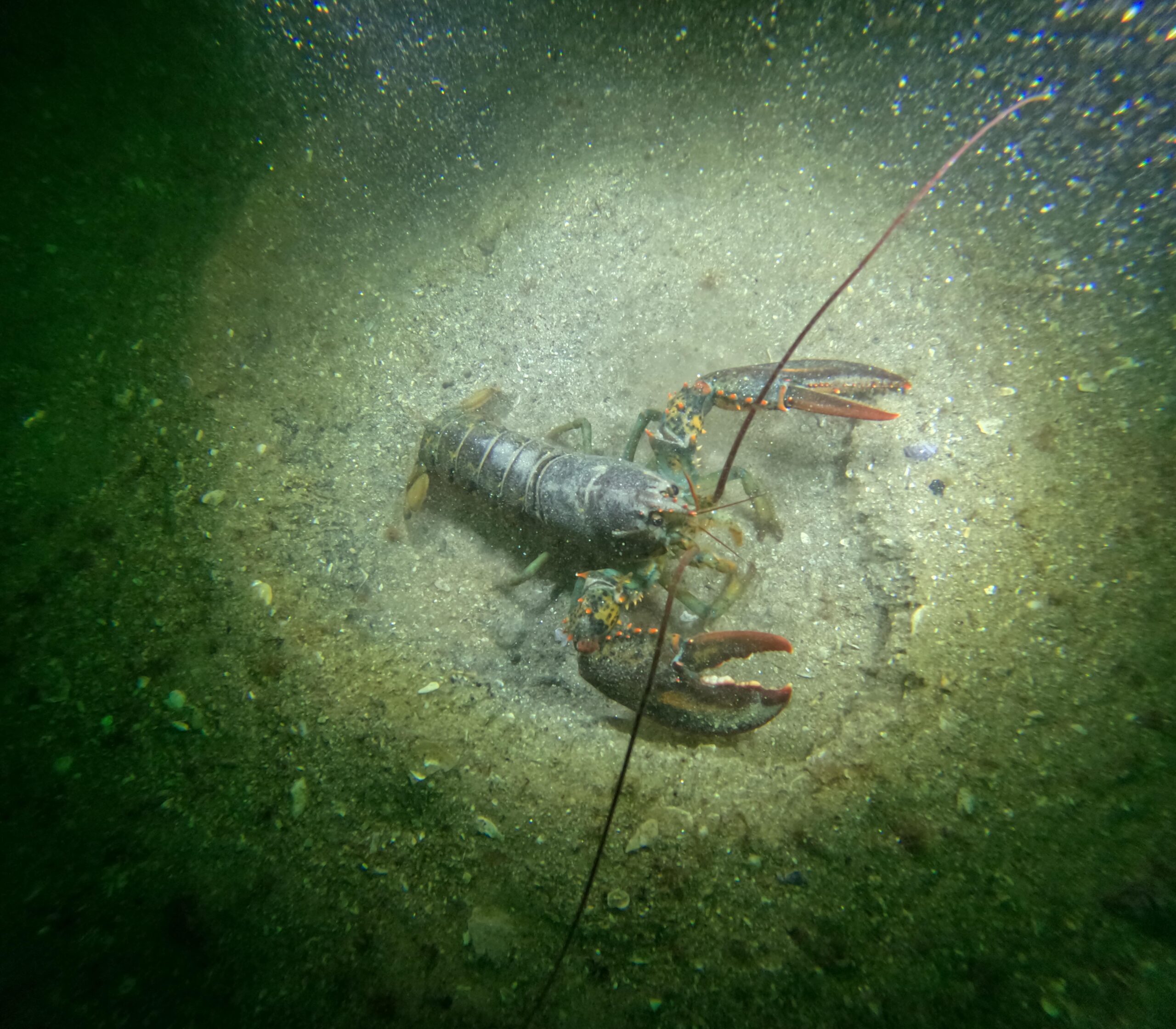
Lobster sampling at sea
Lobster sea sampling, conducted by Homarus Inc. since 2012, gathers critical data on lobster population structure and abundance. At-sea sampling is done aboard fishing vessels during the lobster season with our volunteer MFU fishermen, focusing on carapace size, sex, and egg development of the females.
To supplement this, scuba sampling is conducted by Fisheries and Oceans Canada (DFO) to collect data on a wider range of lobster sizes. These efforts, concentrated in areas of East Coast New Brunswick, helps with sustainable fisheries management through shared data between Homarus and DFO.
By Catch monitoring
Sustainable fishing means leaving enough fish in the ocean, but also minimizing the impact of the fishing gear on its surrounding ecosystems. Every 5 years Homarus adds to the lobster sea sampling a by catch monitoring component. By-catch is defined as all of the species that are caught accidentally in lobster traps. We count and measure all of them on top of the usual lobster sampling. The number of by-caught species found in a lobster traps has a lot to say about the fishery’s impact on its ecosystem.
Rock Crab dockside monitoring
There is very little research done on rock crab and knowing that it is one of the preferred food sources for lobster, Homarus in collaboration with DFO decided to implement a dockside monitoring of this species in 2021. To enhance the landings data, dockside monitoring is being used to collect carapace width frequencies of the catch. Observations of size in relation to the dates and locations it was caught starts to give an overview of the population structures. This is only the beginning…